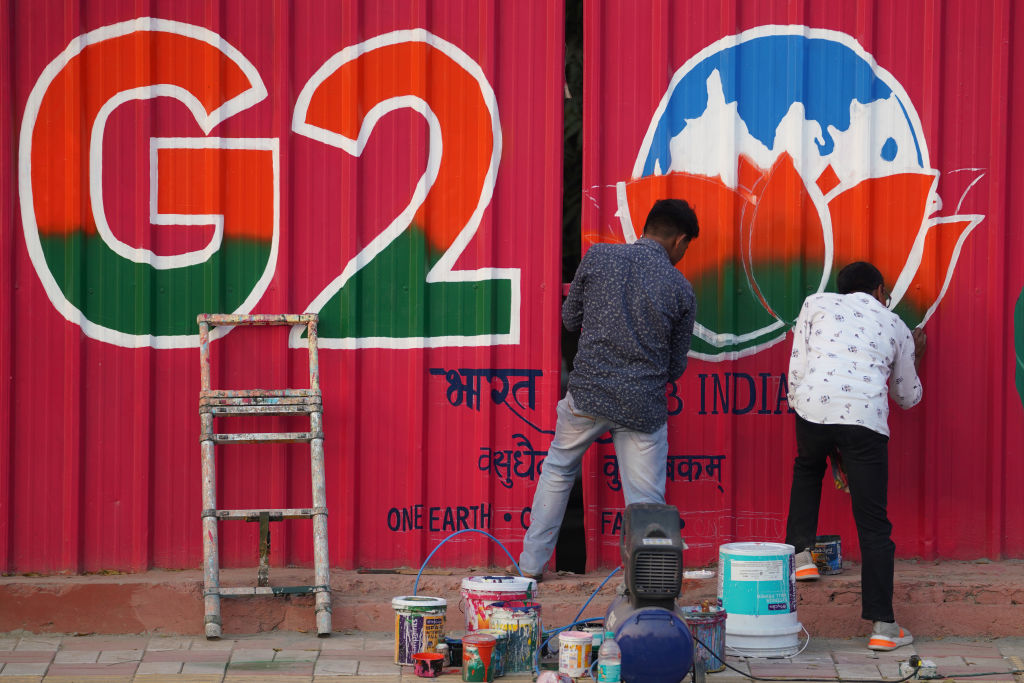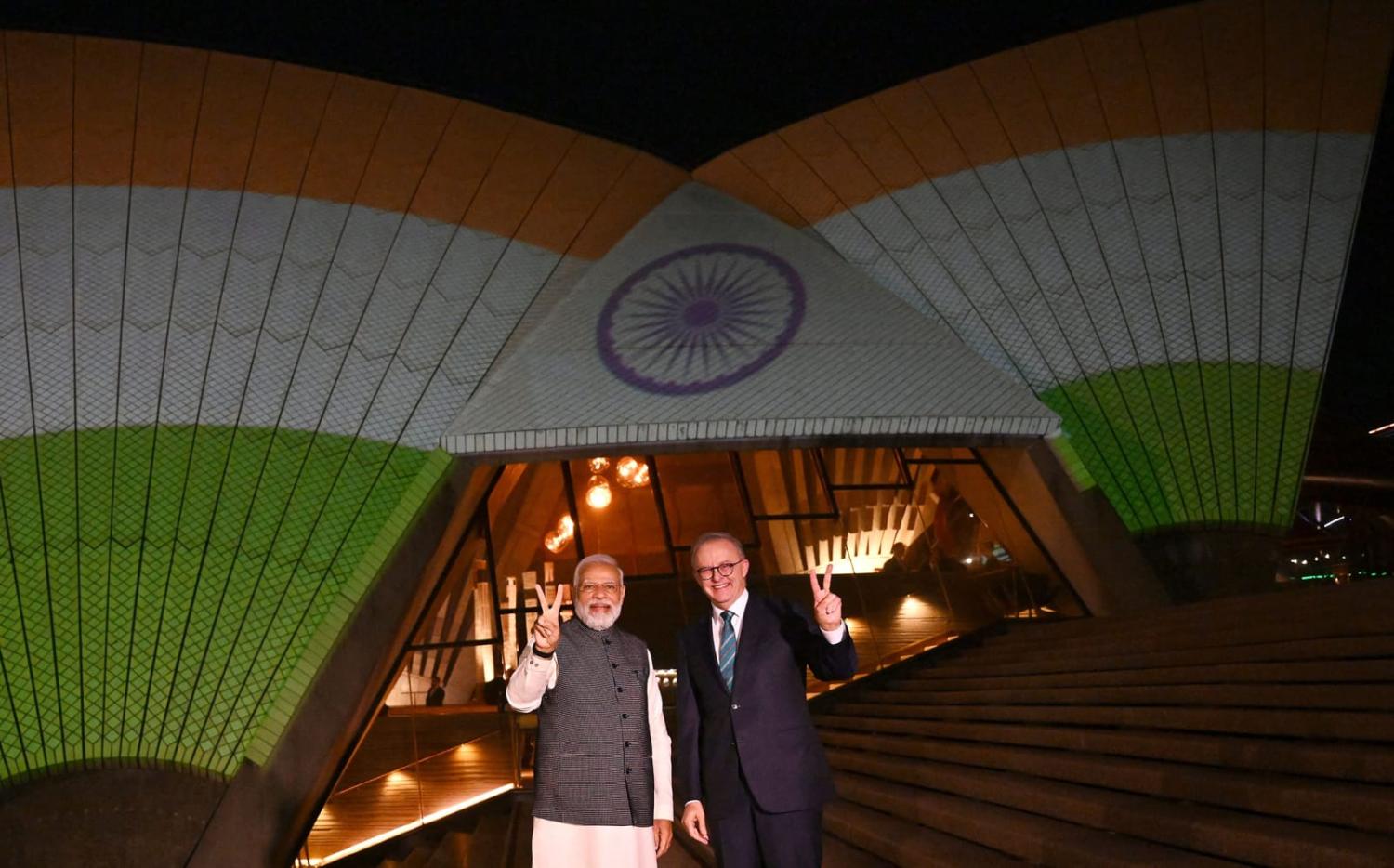India’s Narendra Modi is back in Delhi after his travels in the East. After a busy few days in Japan, Papua New Guinea and Australia, the Prime Minister is gearing up for his forthcoming trips to the West. As far as diplomatic engagements are concerned, Modi’s 2023 dance card is full.
The Indian leader will be in the United States in June for a state visit – a rare occasion for the leader of a country that is not a treaty ally of Washington. Only two Indian leaders have been accorded such an exalted entry in the past – President Sarvepalli Radhakrishnan in 1963 and Prime Minister Manmohan Singh in 2009. In the last few years under Modi, India has unarguably drawn closer to the United States. After all, the two are partners in the long game.
Modi’s visit to the United States will be followed by the Shanghai Cooperation Organisation’s (SCO) summit in early July, hosted by Delhi. Some perceive the SCO as an anti-Western club stitched together by Beijing and Moscow. Since its inception, the SCO has primarily worked around issues of Eurasian security. Counter-terrorism, combating extremism, and separatism are key elements. However, given India’s growing engagement with the West – the Quad and I2U2 (the economic grouping of India, Israel, the United Arab Emirates and the United States) being notable examples – there is a widespread perception outside the region that India’s hobnobbing with Russia and China is a dingy lane with a dead end.
Delhi maintains that the SCO has its benefits. The SCO acts as a forum to engage the Central Asian republics and keep dialogue channels open with China. However, given India’s sharpening China rhetoric and its squabbles with Pakistan, expecting too much from the SCO summit is unwise. Perhaps one of the few consolations that keep Delhi engaged in the SCO is optics.
Given an unsettled and live 3500-kilometre border with China, India does not want to be seen exclusively in the US camp. But India also seems to be teasing Beijing. The Chinese fear India dancing solely with the Americans. Such a scenario would accelerate the Asian balance against China. Delhi perceives that the threat of ultimately siding with the Americans is more valuable – to squeeze concessions out of Beijing – than being an exclusive American wingman. How sustainable and beneficial a policy this is has yet to play out.
Moreover, the upcoming SCO summit has been shifted to a virtual one. This removes uncomfortable questions around the prospect of getting Putin and Xi together on Indian soil. Given the anti-China sentiment at home, India would also be happy to avoid Xi, given the prospect of potential protests erupting with his arrival.

Modi will also visit Paris in July and be the guest of honour at France’s Bastille Day parade. Getting European support to diversify Indian armament dependency away from Russia will be a crucial component of the talks between French President Emmanuel Macron and Modi.
The BRICS (Brazil, Russian, India, China and South Africa) summit in South Africa will follow Modi’s visit to Europe. BRICS germinated as a reaction to the “unipolar moment” of the 1990s. The quest for “multipolarity” – then a euphemism for balancing America’s sheer geopolitical dominance – guided the early days of the grouping. Recently, from a strategic perspective, BRICS has remained a defunct assemblage with a customary photo-op.
Modi’s diplomatic juggling act will end with Delhi hosting the G20 summit in September. In the last few months, the Modi government has taken special pains to highlight India’s grand finale of the summit season. Posters and banners promoting India’s G20 presidency festoon major Indian cities and even tier-two towns. Chants of India’s global leadership reverberate in official quarters of Delhi. After all, India’s mega elections for the national government are in the first half of next year.
How one assesses India’s flurry of diplomatic efforts partially depends on one’s political persuasion. Critics might argue that playing ball with everyone reflects strategic confusion. The unspoken part of engaging everyone is being particularly close to no one. In this game, India is alone. No alliances or treaty partners to salvage a nasty situation. If push comes to shove on the border, taking on an economic powerhouse five times one’s own size will require more than sheer grit. Furthermore, the talk of India’s emergence as a leading power is not backed by brute capabilities. Lofty statements do not make for sound policy.
On the other hand, supporters see India’s current foreign policy as a product of geopolitical acumen and strategic nous. They point towards India’s growing stature in multilateral forums and world leaders falling over themselves to court the Indian prime minister. Like his predecessor, even US President Joe Biden has invited Modi to the White House a year before the presidential election. Standing with trusted partners definitely makes for a good picture.
The reality perhaps lies somewhere in between. The fact is that mature powers engage all sides, albeit to different degrees. Delhi has certainly shed its historical hesitations about the West and has accelerated its partnership with the United States and its allies in Europe, the Middle East and Asia. Such a shift emerges from plain balance of power considerations, given the threat of a two-front war persistently hanging over its head.

